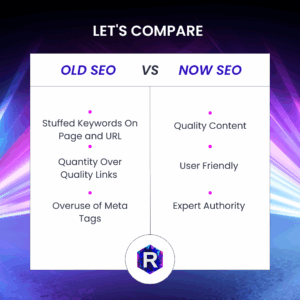How URLs Work in SEO
Hey Raven, I spent $500 and bought a few dozen domains around my area, can you help me redirect them to help our SEO?”
A real issue with a real client. A whole set of them, actually. They got some bad advice and pounced and I had to break the news– redirected URL’s have very little positive impact on your marketing.
Once upon a time in Search Engine Optimization, this would have been such a smart move. You’d have your primary URL like “ravenized.com” and you’d buy up “ravenizednashville.com”, “ravenizedchattanooga.com”, “ravenized[insert service here].com” and have them all redirect to you and your SEO would be phenomenal. It just doesn’t work like that anymore. In fact, SEO evolves so fast that many of last year’s best practices are obsolete.
Once upon a time in Search Engine Optimization, this would have been such a smart move. You’d have your primary URL like “ravenized.com” and you’d buy up “ravenizednashville.com”, “ravenizedchattanooga.com”, “ravenized[insert service here].com” and have them all redirect to you and your SEO would be phenomenal.
Mixed Signals: Some Google History to Set The Scene
he first thing to know is that Google pulled the rug out from under marketing a while back and it completely changed what was needed to be successful. Between 2013 and 2022 Google made some major changes to what matters. These shifts helped users a lot and made SEO a bit more complex than it ever was before.
Prior to 2013, SEO operated off of signals. Basically it was looking for specific things on the page and the more you had– the better. Keywords were crammed in everywhere, URL redirects cast a wide net and it was a quantity game.
Thankfully for every person who has ever been told to “look it up”, new Google cares more about Experience, Expertise, Authoritativeness, and Trustworthiness (E-E-A-T). It wants to show high-quality, helpful content written by people who know what they’re talking about and can be trusted.
Search Engine Land has an excellent article here talking about how EEAT works.

So all of those domains they bought? They had no use for the client and there was no return on that investment, unfortunately.
Unless those extra domains have their own content and valuable backlinks, they’re unlikely to pass much SEO value. Instead, having the best quality content on your actual website and optimizing the URL’s within your own domain is the move to make. These can be loaded with helpful, locally-optimized content that serves users, search engines, and AI and gets you the best possible visibility.
Key Takeaway
Unless those extra domains have their own content and valuable backlinks, they’re unlikely to pass much SEO value. Instead, having the best quality content on your actual website and optimizing the URL’s within your own domain is the move to make. These can be loaded with helpful, locally-optimized content that serves users, search engines, and AI and gets you the best possible visibility.
Keywords: Load Em’ All and Let Google Sort Them Out (Please Don’t)
A decade ago, owning a domain like bestroofrepairnashville.com could give you an edge. But Google’s algorithm has changed its game and now it doesn’t want to see how many times you can put Nashville in your local page. Instead, it is eyeing up your site’s content quality, page speed, mobile experience, and authority.
Along the same vein, it isn’t looking for a keyword abused URL connected to your own domain either. specialroofer.com/roof-repair-nashville-leaky-roof-emergency-quote-now is not a URL that is doing you any favors. In fact, Google may even penalize you for what it thinks is an attempt to circumvent the system.
So what does work? Well, what are you searching for when you need a service or product?
If you are Googling how to clean up your marketing you might type in“free marketing audit” so when a marketer makes a page for that they might use : https://ravenized.com/free-marketing-audit/ (see what I did there?).
But that is how you do it. Put the keywords that make sense but not every one that could exist. In the above example, “specialroofer.com/roof-repair-nashville” would do the trick.
The Robots are Taking Over Our Marketing…Poorly
With the explosion of AI writing tools, many assume that cranking out hundreds of blog posts with AI alone will skyrocket your rankings. As before, the idea of EEAT is not compatible with that. You can use AI, you should certainly optimize for AI, but you can’t rely on it for authentic human content.
AI content must be edited and enhanced by humans who understand the audience and industry. AI can help draft content, outline ideas, and generate SEO keyword variations—but it’s the human layer that brings relevance, originality, and intent. We can use DeepSeek or ChatGPT to the ends of the earth, but no AI can create human authenticity.
So, What Does Work in URL Optimization in 2025?
- Create a logical site structure with descriptive, short URLs
- Use AI as a tool, not a content creator
- Optimize each core service and location page individually
- Focus on content quality, not keyword volume
- Build internal links that help users and bots navigate intuitively
- Don’t buy all those oh so tempting alternative URL’s (Maybe next time we will talk about the places you DO want another domain involved in your marketing)
Heres Lookin’ at U…RL’s
kay, that one was a stretch. Still, SEO in 2025 has changed for the better and now it’s about understanding user intent and delivering value at every step. Clean URLs, helpful content, strategic optimization, and smart use of AI tools all play a role—but the human touch is what truly separates your brand from the noise.
Also, we know some people that are pretty good at these kind of things, if you need help building SEO momentum. Give us a call!

